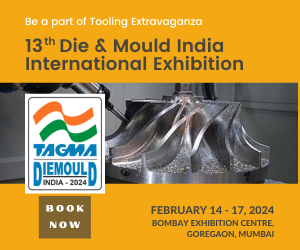
Startups have been known as catalysts that spearhead economic growth globally and have gained much interest over the years. Startups today create value at par with a G7 economy's GDP (Source: WEF). Even though the last six months has seen the lowest funding margin in 4 years (Source: PwC), considering the adverse market conditions, the future still looks bright.
Technology trends like Electrification, Autonomous, 5G, IIOT, Additive Manufacturing and Digital Twin are enabling the growth of engineering startups globally. Many startups are leading in these technologies, creating global opportunity for these new businesses. The combined estimated global market size of these technologies is $ 2.8 trillion by 2026, with combined R&D investment till 2022 has been $ 340 Billion (Source: Pitchbook).
Indian investors are showing great interest in engineering startups, and the key emerging sectors are Electric Vehicles, Drones, Urban Air Mobility, Aerospace and Defense, Medical Devices and Robotics, amongst others. The total investment until 2021 has been $ 1.5B in EVs with Bangalore leading in EV funding (70 per cent), followed by Gurgaon (15.5 per cent). For Drones, the total investment has been $ 62.5M, with Mumbai leading (47.8 per cent), followed by Bangalore (37.6 per cent). (Source: Tracxn Technologies Reports)
Simulation Technology
Engineers may learn and predict how their product will perform in a real environment using simulation technology. It transforms the design process and has the potential to support and position one as a market leader. Simulation technology helps minimise risks, foster innovation, and reduce time to market for the startup. All this works towards a more self-reliant India where startups play a crucial role.
Engineering Simulation Enabling Startups
Multiple challenges arise while trying to scale up engineering startups. It is a massive task for early to mid-stage startups to make dreams a successful reality. They are often at a stage with limited resources and funding, but speed and cost-effectiveness are essential for startups to take that initial leap. They need to build and test physical prototypes to be able to verify the performance of their products. As physical prototyping takes a sizeable amount of time and cost, there is a need to accelerate innovation. However, on their own, these startups may not be able to compete with the existing market leaders. This also puts tremendous pressure on resources financially and in terms of labour.
This is where the development and testing of products in the virtual environment through physics-based simulations along with high-performance computing (HPC) comes into the picture for helping startups tackle their engineering challenges.
So, what does simulation do?
In addition to improving quality, simulation reduces the cost of prototyping for engineers lowering the risks associated with it, reducing the time for production and fast-tracks innovation by enhancing the power of prediction.
Key Benefits of Simulation for Startups
Simulation mainly focuses on these four aspects to help startups:
Determine Feasibility of Ideas - Visionary startups will be eager to know how their ideas will perform in the real world. With these predictions, the potential for growth multiplies. Simulation helps validate the technology and prove the real-world functionality of products, thereby helping determine the feasibility of an idea even before the market launch.
Decrease Design Timeline -. The physical prototyping process is time-consuming, increasing barriers to winning the race to market against potential competitors. Simulation helps reduce a Startup's ‘Time to Market' in terms of design, testing or prototype and therefore accelerates innovation.
Reduce Development Costs - Simulation helps reduce manufacturing, materials, warranty and prototype costs.
Increase Product Performance - With simulation, startups get access to best-in-class software used by industry leaders, thus ensuring an increase in the performance of products at par with the existing market leaders.
Simulation thus enables the acceleration of innovation with a trial for multiple design variations without having to create prototypes, thus helping deliver breakthrough products.

Simulation Domain
The simulation domain extends to all physics and system disciplines, including semiconductors, structures, platforms, digital mission engineering, acoustics simulation, autonomous vehicle simulation, safety analysis simulation, additive, electronics, embedded software, fluids, materials optics & VR, digital twin, photonics and 3D design, amongst others.
Rapid innovation and easy validation of design ideas can empower startups to develop transformational products. This can equip them to become market leaders, thus allowing engineers to explore and predict how their products will perform in the real world.
Simulation has successfully delivered a 65 per cent increase in energy efficiency for startups. Through virtual modelling, simulation has also reduced prototyping activity to one or two iterations per design cycle. This significantly cuts down the prototyping expenses. Simulation has also achieved 90 per cent design accuracy with no deviance in performance. In addition, engineering simulation also helps identify materials with stress characteristics and thermal properties that enable peak performance while satisfying requirements for a more streamlined, lightweight design.
All these have been tried and tested successfully by startups across the globe, including India.
Sustainable Products with Simulation
Virtual prototyping and simulation also help reduce the carbon footprint and create sustainable solutions using technologies with the speed and scale required to remain competitive. Thus, simulation closes the gap between design and reality.
Whether advanced semiconductors or sustainable mobility, medical devices that save lives or satellite systems for better communication, all great human advancements in different sectors are powered by simulation. The answer to the leap of certainty for startups is simulation.





































